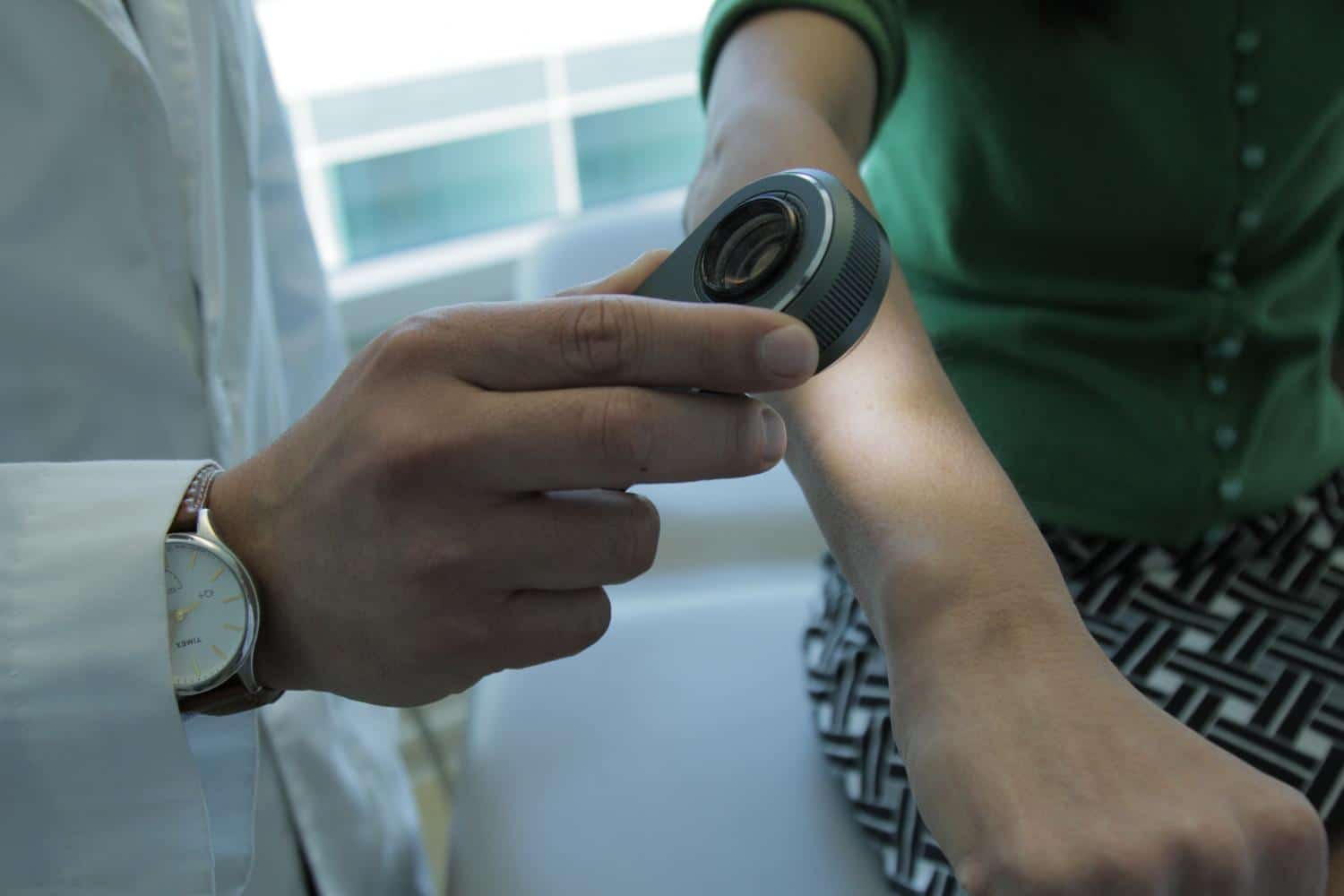Deep learning algorithm does as well as dermatologists in identifying skin cancer
- by 7wData

A dermatologist using a dermatoscope, a type of handheld microscope, to look at skin. Computer scientists at Stanford have created an artificially intelligent diagnosis algorithm for skin cancer that matched the performance of board-certified dermatologists. Credit: Matt Young
Universal access to health care was on the minds of computer scientists at Stanford when they set out to create an artificially intelligent diagnosis algorithm for skin cancer. They made a database of nearly 130,000 skin disease images and trained their algorithm to visually diagnose potential cancer. From the very first test, it performed with inspiring accuracy.
“We realized it was feasible, not just to do something well, but as well as a human dermatologist,” said Sebastian Thrun, an adjunct professor in the Stanford Artificial Intelligence Laboratory. “That’s when our thinking changed. That’s when we said, ‘Look, this is not just a class project for students, this is an opportunity to do something great for humanity.'”
The final product, the subject of a paper in the Jan. 25 issue of Nature, was tested against 21 board-certified dermatologists. In its diagnoses of skin lesions, which represented the most common and deadliest skin cancers, the algorithm matched the performance of dermatologists.
Every year there are about 5.4 million new cases of skin cancer in the United States, and while the five-year survival rate for melanoma detected in its earliest states is around 97 percent, that drops to approximately 14 percent if it’s detected in its latest stages. Early detection could likely have an enormous impact on skin cancer outcomes.
Diagnosing skin cancer begins with a visual examination. A dermatologist usually looks at the suspicious lesion with the naked eye and with the aid of a dermatoscope, which is a handheld microscope that provides low-level magnification of the skin. If these methods are inconclusive or lead the dermatologist to believe the lesion is cancerous, a biopsy is the next step.
Bringing this algorithm into the examination process follows a trend in computing that combines visual processing with Deep learning, a type of Artificial Intelligence modeled after neural networks in the brain. Deep learning has a decades-long history in computer science but it only recently has been applied to visual processing tasks, with great success. The essence of machine learning, including deep learning, is that a computer is trained to figure out a problem rather than having the answers programmed into it.
“We made a very powerful machine learning algorithm that learns from data,” said Andre Esteva, co-lead author of the paper and a graduate student in the Thrun lab. “Instead of writing into computer code exactly what to look for, you let the algorithm figure it out.”
The algorithm was fed each image as raw pixels with an associated disease label. Compared to other methods for training algorithms, this one requires very little processing or sorting of the images prior to classification, allowing the algorithm to work off a wider variety of data.
From cats and dogs to melanomas and carcinomas
Rather than building an algorithm from scratch, the researchers began with an algorithm developed by Google that was already trained to identify 1.28 million images from 1,000 object categories. While it was primed to be able to differentiate cats from dogs, the researchers needed it to know a malignant carcinoma from a benign seborrheic keratosis.
“There’s no huge dataset of skin cancer that we can just train our algorithms on, so we had to make our own,” said Brett Kuprel, co-lead author of the paper and a graduate student in the Thrun lab.
[Social9_Share class=”s9-widget-wrapper”]
Upcoming Events
Evolving Your Data Architecture for Trustworthy Generative AI
18 April 2024
5 PM CET – 6 PM CET
Read MoreShift Difficult Problems Left with Graph Analysis on Streaming Data
29 April 2024
12 PM ET – 1 PM ET
Read More




